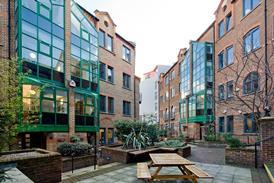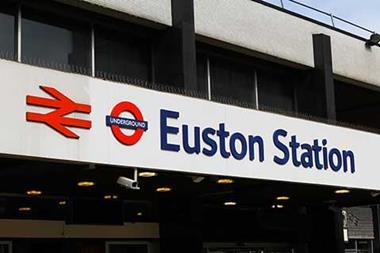London largely developed in an era of laissez faire, when the government’s role was seen as preventing evils rather than regulating or stimulating business activity.
Nowhere is that more true than in the City, where the unplanned and apparently chaotic narrow alleyways enabled businesses to agglomerate in an early form of high-density development. It may not have been pretty,
but it worked commercially.
In the 20th century, the invention of lifts and air conditioning, together with mechanised building techniques, facilitated the development of medium-height and high-rise buildings that achieved the same economic benefit even more successfully. But as the land becomes used for even higher densities, transport infrastructure becomes a much greater consideration.
Unlike most European cities, which sited train stations in the centres, the late 19th century / early 20th century ‘plan for London’ was to move people around the capital using the underground and roads, and to link that network to the mainline train stations, which were only allowed to be located on the fringes of Central London. It is therefore only in the past 30 or so years, as the availability of development sites in central London has reduced and London has continued to grow, that such fringe locations have become viable for development.
Perhaps the most recent of these is the Eurostar terminus at St Pancras, which stimulated the emergence of King’s Cross as a viable development opportunity. This was one of the reasons for AXA Real Estate’s investment in 6 Pancras Square, a 400,000 sq ft office part-speculative development. The upgrading of Blackfriars and Farringdon (a Crossrail station) was also a key factor in our decision to develop 60 London at Holborn and to refurbish of One St Paul’s Churchyard.
These locations offer a valuable commodity: public transport access. And it is not just evident in the rents office occupiers are willing to pay; residential owner-occupiers will easily outbid office occupiers, given the opportunity. Clearly, there are attractions to living in central London, but the reduction in commuting costs and inconvenience are undoubtedly significant push factors. So it is not surprising that, to the east of the City, previously ‘no-go’ boroughs such as Tower Hamlets and Newham have become more attractive. There is even a case for arguing that office occupiers can more than compensate for the higher rent payable in an accessible location by the lower commuting times and by attracting talented employees at a reasonable cost.
At times, it was not clear whether Crossrail would proceed, so it is not surprising that the property industry has been slow to respond to the opportunities it presents. It is clear that market prices have moved to reflect the improved values of areas that will be served by it. Virtually all of the line’s new stations are being built in central London and Docklands (apart from Abbey Wood, in south-east London) and most adjoin existing stations, reflecting the inability of the current stations to provide that capacity. It is likely that the nine new or extended central London stations will become nodes of new development.
As land values rise, higher-density schemes will become more viable, and that will add to the increasing vertical profile of London.
In contrast to the early development of London, when the value created by the railways was in the opening up of the home counties as commuting areas but with relatively few locational benefits to central London, this government-sponsored scheme will benefit both ends of the lines. With the capital’s population expected to grow by about 1% a year in the next decade, and with the majority of that being from net inward migration (domestic and foreign), it will include a large proportion of workers requiring somewhere to live.
Further out, the travelling times will be much shorter than on the existing rail network, but those outer stations will not be able to offer the agglomeration benefits to businesses that central London does and those areas are more likely to see increased density of residential development. Theoretically, this would be competition for central London residential but, in practice, the travelling costs will be commensurately higher and unlikely to erode the locational value of central London residential. In any case, there is no real housing shortage in the UK. There is a locational shortage, and the opening up of new locations will help to alleviate the housing crisis where it actually occurs: in and around London.
The next big projects are set to be High Speed 2 (HS2) and Crossrail 2. The former is not so much a London project as one to increase connections between the capital and the Midlands and the North. Crossrail 2 will be focused on London, running south west and north east from it. The proposed route will intersect Crossrail at Tottenham Court Road, which is likely to further increase the value of what was formerly a fairly run-down part of the West End and should add to the transfer in value from Oxford Street West to Oxford Street East. At Euston, it will connect with HS2, facilitating what was once a fringe location.
These two Crossrail projects are likely to drive locational shifts in values exceeding that of Broadgate and Canary Wharf combined, and will facilitate a new generation of development opportunities to meet the growth of Europe’s global city.
Anne Kavanagh is global head of asset management at AXA Real Estate






























No comments yet